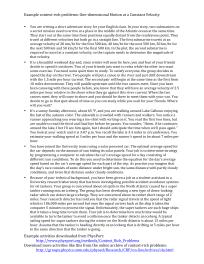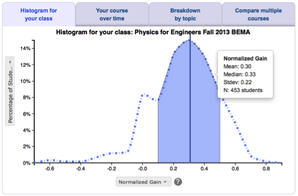
Developed by: University of Minnesota Physics Education Research Group


middle schoolhigh schoolintro collegeinter-mediateupper levelgrad school other

calc based

alg based

conceptual







Overview
What? Students work in small groups on short, realistic scenarios, giving them a plausible motivation for solving problems. The real-world scenarios are more complex than traditional problems and may include excess information or require students to recall important background information.
Why? Context-based exercises have been consistently validated by physics education research. This specific method can produce high levels of student engagement. Well-crafted problems challenge students to push themselves to the edge of their capabilities and better retain key concepts.
Why not? Collections of context-rich problems often do not include answer keys or guidance for how to use them, and may be difficult for an inexperienced teacher to use effectively. Creating appropriate problems is challenging. Close supervision and guidance by skilled instructors is optimal.
Student skills developed
- Conceptual understanding
- Problem-solving skills
- Making real-world connections
Instructor effort required
- Medium
Resources required
- Tables for group work
Resources
Teaching Materials
The University of Minnesota has created a free online archive of context-rich problems, where you can find problems for many topics in introductory mechanics and electromagnetism.
Research
This is the third highest level of research validation, corresponding to:
- at least 1 of the "based on" categories
- at least 1 of the "demonstrated to improve" categories
- at least 1 of the "studied using" categories
Research Validation Summary
Based on Research Into:
- theories of how students learn
- student ideas about specific topics
Demonstrated to Improve:
- conceptual understanding
- problem-solving skills
- lab skills
- beliefs and attitudes
- attendance
- retention of students
- success of underrepresented groups
- performance in subsequent classes
Studied using:
- cycle of research and redevelopment
- student interviews
- classroom observations
- analysis of written work
- research at multiple institutions
- research by multiple groups
- peer-reviewed publication
References
- P. Heller and M. Hollabaugh, Teaching Problem Solving Through Cooperative Grouping. Part 2: Designing Problems and Structuring Groups, Am. J. Phys. 60 (7), 637 (1992).
- P. Heller, R. Keith, and S. Anderson, Teaching Problem Solving Through Cooperative Grouping. Part 1: Group Versus Individual Problem Solving, Am. J. Phys. 60 (7), 627 (1992).
- M. Martinuk and J. Ives, Do prescribed prompts prime sensemaking during group problem solving?, presented at the Physics Education Research Conference 2011, Omaha, Nebraska, 2011.





